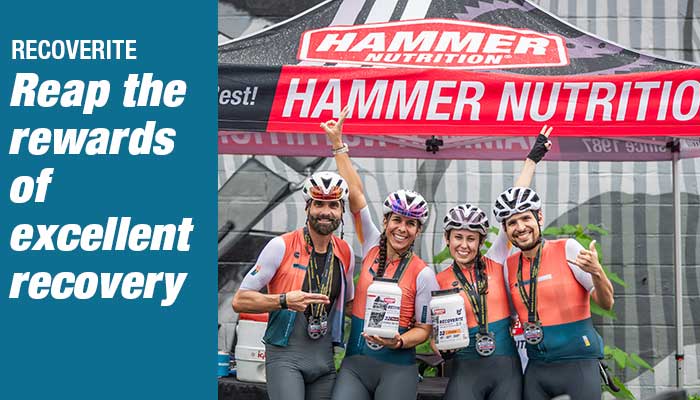
BY DR. BAYNE FRENCH
Tell Me Something I Care About:
-
The evidence behind these recommendations is weak. What are not weak however, are the myriad detrimental metabolic and health consequences of these recommendations.
-
What you can and will learn, if you can keep your ass in a chair for 10 minutes, are that these recommendations are actually incongruous with peak performance, and dramatically unfavorable if avoiding disease is on your to-do list.
Dumpster Talk:
I spent a long time on this article. Most of it was in search of a catchy word for the title. I considered words like fallacious, unsubstantiated, lunacy, shit-show, balderdash, immoral, biased, dangerous, and gobbledygook. Some of these just did not fit. Others were too difficult for me to pronounce.
I settled on dumpster fire, because I love the smell of burning trash. And it’s descriptive of the health mayhem that occurs over time should you choose to employ high carbohydrate fueling.
As you hang on my every word, I wish to do the following:
-
Explain the basis for the current fad recommendations of high carbohydrate consumption for endurance fueling.
-
Review biochemical and metabolic pathways that we all possess.
-
Explain how and why high sugar fueling is so unhealthy.
-
Offer much healthier fueling options that I believe improve performance and increase career longevity.
High Carbohydrate Fueling:
We have no nutritional requirement for carbohydrate. I really don’t care if you believe me. Or if you think I’m “unscientific”, or are “disappointed” with my writing, as some have expressed (I am always trying to get better though).
This is not true of fat or protein. If we do not eat these we die. The healthiest and leanest patients I see do not consume carbohydrate as a staple. The healthiest athletes I see in my practice fuel with modest amounts of carb that is not sugar, and only with heavy, longer training sessions and competition. They are able to access fat for fuel and the generation of our coveted energy molecule ATP. More on this later.
Intense and prolonged endurance pursuits on the regular are relatively new in our human experience. In a way, it could be considered unnatural. We are of course engineered for movement: lifting, traveling, and fighting, all the while procreating, but strenuous and repetitive activities (when conservation of energy was vital for survival) is new. Given that, nutritional requirements are different for those with a proclivity for endurance suffrage, as they would be for others.
There are outliers, like truly high-level, “fat adapted”, competitive athletes that do not fuel with carbohydrate. Later will be an explanation of the work of Dr. Volek with these athletes. Then there are others, in the middle (like me, minus the “high-level”). I have known the joy of obstacle course racing podiums. I even won prize money, which was enough to buy my fishing license for the year. For long training sessions and competition, I fueled with carbohydrate but never in large amounts.
Most people and especially athletes are not fat adapted. They simply do not burn fat for fuel very well. This is probably you. Like a foreign language or pinochle, we can learn to become efficient burners of fat. Until this glorious day comes, the adage Carb is King rings true. I mean that most people will do better, most of the time, fueling with carbohydrate.
The difficulty arises when we ask how much carb and from what source?
There are also many circumstantial issues to consider like body size, event duration, ambient temperature, and whether the competing individual is a beer- drinking, bread-eater or more metabolically efficient and fat adapted in their daily life. What are your goals with competition? Just to finish, or to try to win?
It becomes exceedingly difficult to make accurate blanket statements, and in fact irresponsible to imply that since some is good, more must be better.
The More is Better concept has permeated human thinking for generations. Current fad fueling recommendations are just an extension of this mindset. But is it valid in regards to athletic performance? Dr. John Smith thinks so.
In 2010 Dr. Smith studied 12 (twelve, not twelve thousand) high-level cyclists and found that there was a dose-response relationship with the amount of glucose ingested and performance (Smith et al. J Appl Physiol. 2010).
In 2013 he led a slightly larger study of 51 triathletes and cyclists. Twelve different beverages were used and the participants were blinded as to what they were consuming. Not blinded like their eyes were gouged out, but that they didn’t know what they were drinking. Again, the conclusion was that the higher the carb intake, the better the performance (Smith et al. Med Sci Sports Ex. 2013).
Autonomic Dysreflexia:
Can we just step back a moment and think about this? The improvements in performance in Dr. Smith’s studies were minimal. The sample sizes of studied participants were quite small making it very difficult to assign any statistical significance or power to the findings.
These athletes were not followed over a prolonged period of time in a longitudinal manner looking at performance. Nor were GI distress, career longevity, number of injuries, percent body fat, cancer and heart disease incidence studied. More on this later.
Consider this. When human mammals, including well-conditioned athletes, consume large amounts of sugary crap, their blood sugar increases. The body knows this is a toxic situation and releases stress hormones like cortisol and epinephrine (adrenaline). Perhaps this “fight or flight” response is responsible in part for the modest increase in performance.
This stress response has been reported in Paralympic athletes that intentionally cause bodily damage leading to the neurological response of Autonomic Dysreflexia, or colloquially as “boosting”. According to a CBC News article in 2012, this illegal practice can consist of “sitting on pins, cracking toes, twisting scrotums”. The stress response can lead to enhanced physical activity, conferring a small advantage, yet obviously antithetic to health.
The blood sugar spikes that result from high carb fueling evoke a similar physiological response.
High Sugar Fad Recommendations:
A few companies and their vocal mouthpieces are currently making recommendations I consider harmful, on how much carbohydrate athletes should be consuming per hour. These guidelines are not based on powerful studies, meaning a large number of people were not followed over the course of many years. Nor are these recommendations based on any semblance of healthful action.
We do have a storage form of carbohydrate called glycogen. Intense exercise lasting about an hour or two is usually well fueled by this stored carbohydrate.
According to one high carb fueling author, “30-60 g of simple carbs per hour” is needed for intense exercise lasting 1-2 hours. I agree with this, and feel that this level of carbohydrate consumption is well substantiated by decades of research and experience, but regardless of the exercise duration.
This author goes on to recommend that for intense exercise over 2 hours, 60 to 90 g of carbohydrate per hour is needed. On what basis?
Author Andy Blow states: “This is where ‘multiple transportable carbohydrates’ (MTCs) such as Glucose/Fructose blends can often be preferred in order to help to maximize absorption of very high amounts of carb via your gut. MTCs are a fancy way of saying different sources of sugar.”
The Gatorade Sports Science Institute (GSSI) recommends that in the 24 hours prior to hard training or competition athletes should consume 7-12 grams of carb per kilogram of body weight. Let’s do some math… for a 150-pound athlete that is 477-816 grams of carb. That’s equivalent to about 50 slices of bread. Who are these people? Honestly, your health depends on you shucking this advice like a sugary crap cloak.
Gut Training?:
Your gut flora has an orgy when it sees lots of carb. There’s fermentation and methane production and other microbiological happenings that just stink. Seriously, open a window AND turn on the ceiling fan.
There are now high carb fueling terms for this: Exercise-induced gastrointestinal syndrome (EIGS), and Exercise-associated gastrointestinal symptoms (Ex-GIS).
You: “Earl, my God man, did something die inside you?!”
Earl: “Sorry fellas, that’s my Ex-GIS acting up”.
You: “Chet, there’s literally a blue haze behind you! Do NOT run past an open flame dude!”
Chet: “Yah, I got a bad case of EIGS”.
Perhaps we could “train” our intestine to not react to so much ingested carb. It’s worth a try because sugary crap tastes yummy. There’d be no shortage of American volunteers for this study.
Martinez et al (Sports Med. 2023) performed a Systematic Literature Review on “gut-training”. 304 studies were reviewed and 8 were considered appropriate for inclusion. It was found that with a 2 week “repetitive carbohydrate feeding protocol” (i.e. sugar stuffing), gut discomfort and carbohydrate malabsorption reduced considerably. Significant improvements in upper (ralphing) and lower (toots) symptoms were observed. Strong work everyone, we all need to do our part to protect the ozone layer.
Again, can we just rationally think about this for a moment? Competitive eaters gorge to stretch their stomach, and to neurologically blunt a vomiting response. Neither form of “training” has a semblance of health, disease prevention, or longevity inherent to it.
Asker Jeukendrup PhD seems like a pretty smart guy. He published an article Training the Gut for Athletes (Sports Med. 2017). The details of sugar absorption from the intestine into the blood stream via “transporters” were discussed. There are specific transporters for glucose and fructose. It was shown that by trying really hard, and consuming large volumes of sugary crap, the number and efficiency of these transporters could be enhanced. The hopeful results being less toots, more sugar in the blood stream, and better performance.
Dr. Jeukendrup seems to agree with “current guidelines” to consume 60 g of carbohydrate per hour for exercise duration lasting up to 2 hours. Above 2 hours, up to 90 g per hour. Why? Interestingly the article was published with support by the Gatorade Sports Science Institute, a division of PepsiCo.
I have no respect for performing studies, funded by sources that sell products the studies are designed to support. To say nothing of the potential future liability issues associated with promoting the consumption of large volumes of a toxic substance (sugar) that drives the formation of cancer, cardiovascular disease, obesity, diabetes, and Alzheimer’s disease. That is not a legacy I would want.
The Opposite of High Carb Fueling:
Dr. Volek et al. performed the Fat Adapted Substrate Oxidation in Trained Elite Runners (FASTER) study that was published in Metabolism in 2016. The purpose was to study the extent of metabolic adaptations and differences between high-carb eating athletes and low-carb, high-fat eating athletes.
It involved 20 elite ultra-marathoners and ironman distance triathletes, all in “racing condition”. Over half of them had sponsors, a third of them had course records, a fourth of them participated for Team USA, and some with national and international records. Basically, they were a group of super scary individuals. Through an extensive interview process, 10 carb eaters were found (carb:protein:fat ratio being 59:14:25) and 10 fat eaters were found (10:19:70). The two groups were very closely matched in every other category except diet and fueling practices.
The low-carb group consumed 6-times less carb during the course of an average day than the high-carb group (82 vs 684 g/day). What is very important to understand is that the low-carb eating athletes had been doing so for an average of 20 months, thus considered well adapted.
Despite the two groups being considered closely matched, there are some interesting small differences between them. HC is high-carb and LC is low-carb:
HC LC
% body fat 9.6 7.8
Lean mass, kg 57.3 60.9
Fat mass, kg 6.5 5.5
VO2 max 64.3 64.7
From the above data you can see notable differences in body fat percent and the amount of muscle the athletes possess.
The ability to burn fat was 2.3-fold higher in the low-carb group (1.54 g/minute vs 0.67 in the high-carb group). Despite the marked differences in fuel usage there were no significant differences in resting muscle glycogen, exertion related glycogen depletion levels, and glycogen re-storage levels in recovery. Restated, the low-carb athletes possessed an extraordinarily high ability to burn fat but exhibited the SAME ability to break down stored carbohydrate, and build back those stores as the high-carb athletes.
Several previous studies however did not show preserved glycogen stores in low-carb athletes (Phinney et al. Metabolism. 1983; Helge et al. J Physiol. 2001; Zderic et al. Am J Physiol Endocrinol Metab. 2004). These studies in general studied athletes consuming low amounts of carb for a much shorter period of time, indicating that the cellular mechanisms and metabolic pathways involving glycogen preservation and restoration make a longer time. Ample adaptation takes a least several months, not weeks.
Author Dr. Volek likened the muscle glycogen responses in the low-carb athletes to that of “Alaskan sled dogs”. These animals have tremendous endurance abilities and have been shown to maintain their glycogen stores despite running 160 km per day for 5 days and eating high fat and only 15% carb (McKenzie et al. Med Sci Sports Exerc. 2005).
For the first time, the FASTER study showed that well fat/keto-adapted endurance athletes possess a dramatically enhanced ability to break down and burn fat while maintaining normal muscle glycogen. Dr. Volek states “Keto-adaptation provides an alternative to the supremacy of the high carbohydrate paradigm for endurance athletes”.
Summary of the FASTER study benefits of fat-adaption and ketones summary:
- Fat is considered a more efficient fuel. It is over twice as energetically dense as carb and protein. (1 gram of fat possesses 9 calories, 1 gram of carb and protein 4 calories). Furthermore, fat is stored in an anhydrous manner, meaning it is not linked with water.
- We possess a massive depot of fat storage (50-100,000 calories). Carb stores in the form of glycogen are meager (less than 2000 calories).
- Ketones are made when fat is burned. Ketones reduce oxidative stress. Exertion results in a huge increase in mitochondrial-induced free radicals. Ketones cause an upregulation of antioxidant pathways (Histome deacetylase inhibitor) to reduce these free radicals and oxidating stress/damage.
- Ketones are anti-inflammatory and reduce inflammatory compounds like IL-6, IL-8, TNF-alpha. Other markers of inflammation like white blood cell count and c-reactive protein (CRP) are reduced in a higher ketone environment.
- Observed (but not measured) enhanced recovery. This is largely anecdotal but certainly has biochemical merit given reduction of pro-inflammatory compounds and enhanced ability to reduce free radicals.
- Reduced “bonk”. The dreaded bonk is an energy crisis occurring in muscles and the brain. Ketones fuel the brain readily, and ketones and fat fuel skeletal muscle efficiently and basically never run out. There is a direct linear relationship between blood ketones and brain ketones.
- There is absolutely no question regarding the ketogenic diet’s ability to assist with weight loss. This improved body composition has direct impacts on the power to weight ratio.
- Enhanced career longevity. Animal models (Roberts et al. Cell Metabolism. 2017) have shown extended longevity and “healthspan” in animals eating a higher fat diet. Again, there is much that makes sense here. Slow accumulation of fat tissue around the midsection directly compromises power to weight. Oxidative stress and inflammatory compounds result in metabolic consequences over time, increased soreness, and potentially impaired performance.










30 comments
Hi. Thanks for the article. I am 56 years old, 6’1" and between 175-180. I have raced casually for 16 years, having done five 140.6s and 21 70.3s (around 11-12 hours/5-5.5 hours) on 10-14 hours training a week. I have come to just use Hammer bars and gels along with sweet potatoes over the last 6 years because they taste awesome, don’t upset my stomach and give me the energy I need. I’m 56 and very concerned about the cancer, diabetes, bone loss, etc. from too many carbs and the multiple problems associated with high sugar consumption. I don’t even doubt that it “works” to train and race with that strategy—but I don’t think it’s at all healthy long term. But, I can gain 15 pounds just looking at a pizza or sweet dessert. Any thoughts or articles on a strategy to keep weight off, but fuel training? I’m right now kind of living low carb (50-60) a day—mostly getting my carbs from Hammer gels and bars before and during training. I have tried training very low carb and somewhat low carb, but I feel terrible. I’m a teacher, and I also feel terrible throughout the day when I restrict carbs too much. I have never been able to get to the place where I feel good training toward Ketosis.
Thanks—I love the product. Greg
———
Hammer Nutrition replied:
Hello Greg, thank you for your comments, questions and support. It sounds like you are doing pretty well, but there’s a couple of things I’d suggest you look at. First of all, 50-60 grams of carbs per day is keto and too low for an athlete training 10+ hour per week, also slows recovery. Besides consuming 175-200 calories per hour (your bodyweight plus or minus ) during exercise lasting longer than 2 hours, I’d add high water content, leafy green and cruciferous vegetables to your meals – salad with olive oil, zucchini, cabbage, bok choy and dozens of others. We need the fiber. Grains and starches are what I avoid most all of the time. I like fat/protein snacks during the day – avocado, raw nuts, olives, etc. Next, avoid the bars and gel prior to starting exercise, we’re trying to avoid insulin spike prior to exercise so you can begin burning fat from the get go. Lastly I do actually doubt that consuming 2-4 or more pounds of sugar per week during training and after training as well as in the daily diet is a path to increased performance for anyone, elite or not. As always, please feel free to follow up directly via phone, email, or live chat to discuss further. BDF
Hey John, I have written you a couple of times in the past and I will repeat the same question: how is it that the Pro Tour teams keep UPPing the carb intake while you disparage it? They employ the top nutritionists now and spend all winter testing their riders like lab rats. I read a recent interview with one who said, “No one bonks anymore. If you do, you screwed up.” I have used Hammer products almost since the day you opened for business, relying solely on Hammer Gel Perpetuem, and Endurolytes. I am a 66 year old competitive cyclist across multiple disciplines with numerous state and national titles to my name. While my speciality is shorter 20-40k TTs, I have also raced countless 2-3 hour XC and gravel races. For years I followed your recommended protocol using the above mentioned products, and numerous times I have blown sky-high in the last 30-60 minutes of those longer events. More recently I began experimenting with increasing my hourly calorie intake from that 200ish mark to 350-400, again with a combination of Perpeteum and Hammer Gel. I am finishing stronger than ever now without the debilitating bonking and cramping that plagued me in the past. What say you? Thanks.
———
Hammer Nutrition replied:
Hi James,
I’m not sure who John is – it’s just me (Brian Frank), Steve and Bayne. Don’t recall you asking this question before, but happy to answer it. What the pro tour cyclist are supposedly doing is of no interest to me or anything that real world athletes should emulate – unless you are also a twenty something year old pro tour cyclist. Neither the whispers of the pro peloton nor the limited research behind it can mitigate the damage adding 2-4 pounds per week of processed sugar will do to one’s health. With regard to your experiences, I’m only guessing here, but it be that you did not start the races in a fasted, low insulin state (accomplished by consuming NO calories for 3 hours prior to race start) and were not burning fat well (recall we do not burn fat when insulin levels are high), blowing through your glycogen stores prematurely and not being able to replenish them fast enough, ending up behind the curve as far as glycogen burn rate vs replenishment rate. The fact that you’ve been able to increase your intake as much as you have without GI distress speaks to my other point – if for whatever reason an athlete does want to increase their hourly caloric intake, our complex carb based products are preferable to sucrose/fructose. That being said, I do not believe that you’d be able to maintain 350-400 cal/hour for much more than 2-3 hours without bad things happening. BDF
Again just brainstorming from an angry man. The critical thinking readers can decide about best fueling practices. It is just disappointing to see Hammer Nutrition is now providing a platform for anti-science propaganda. We have too much of this already!
———
Hammer Nutrition replied:
Hello Alfred, thank you for taking the time to share your thoughts, and I’m sorry you missed the humor and levity of Bayne’s writing style. How is a critically thinking athlete supposed to make an educated decision with only one side’s argument backed by limited science and a lot rumor mill, anecdotal evidence (it’s what the pro’s are doing, don’t you know)? This is not brainstorming and is 100% accurate in regards to decades of metabolic science. It is intended to counter the anti-science propaganda coming from the pro sugar crowd. Criticizing the messenger and making vague statements doesn’t add much to the conversation. I am completely anti BAD science, and there is a lot of that, both new and old. I’ve been railing against sugar for over three decades and I’ll give a platform to anyone who wants to speak honestly and accurately about the insidious nature of this ubiquitous, extremely addictive “food”, as Dr. French does so humorously. BDF
———
Hammer Nutrition replied:
Hello Alfred, thank you for taking the time to share your thoughts, and I’m sorry you missed the humor and levity of Bayne’s writing style. This is not brainstorming and is 100% accurate in regards to the science. Criticizing the messenger and making vague statements doesn’t add much to the conversation. Anti-science? Yep, we are completely anti BAD science, and there is a lot of that, both new and old. The handful of industry funded high carb studies are the science to which you refer? Kind of reminds me 50 years of science that said fat was the cause of all bad things, only to out later that all of those studies were bogus, funded by the sugar lobby to hide the fact that it was their product, not fat doing the harm. I’ve been railing against sugar for over three decades and I’ll give a platform to anyone who wants to speak honestly and accurately about the insidious nature of this ubiquitous, extremely addictive “food”, as Dr. French does so well. BDF
Thank you for the article, looking forward to products and advice the will improve our fat burning.
———
Hammer Nutrition replied:
Hi Dan, thank you for the comment. We have several products that encourage fat metabolism during exercise. However, to maximize fat metabolism during exercise there are two key factors: beginning exercise in a fasted state- meaning you wait three hours after eating to begin exercise during the day, or you begin exercising first thing in the morning with no food. The second thing you can do to encourage fat metabolism during exercise is to avoid consuming sugar. Use any one of our complex carb fuels such as Hammer Gel, HEED and or Perpetuem. Please feel free to follow up directly via phone, email or live chat to discuss further. BDF
This is misinformation in regards to performance. If you are talking health, let’s hear about fruits and veggies, going for walks, and weight training. If you’re speaking endurance performance, let’s talk about high carb fueling and the amount of records being broken recently due to that being a massive factor. You’re a company that sells highly processed sugars and products like gels. Performance and health can overlap, but health isn’t doing an Ironman, racing Leadville, or running a marathon.
———
Hammer Nutrition replied:
Hi John, that’s rich. Wish I could be more accommodating, but you’re just wrong, about everything. How about the companies touting high carb fueling with no massive asterisk about the negative health consequences. Telling an ever day, working athlete that they’ll go faster if they consume massive amounts of sugar because that is supposedly what the pros are doing now is not misinformation. You probably should take a better look at my product line – I DO NOT sell processed sugar based products. You want to count how many Ironman age group wins, national and world championships athletes have won using my products and my fueling protocols (no more than 30-60 grams of complex carbs per hour) over the past 37 + years? They won all of those events without compromising their health. Yes, peak performance and peak health can co-exist in the same person. That’s been my position since day one – you do not have to go on a junk food binge to run a marathon, Ironman or anything else. BDF